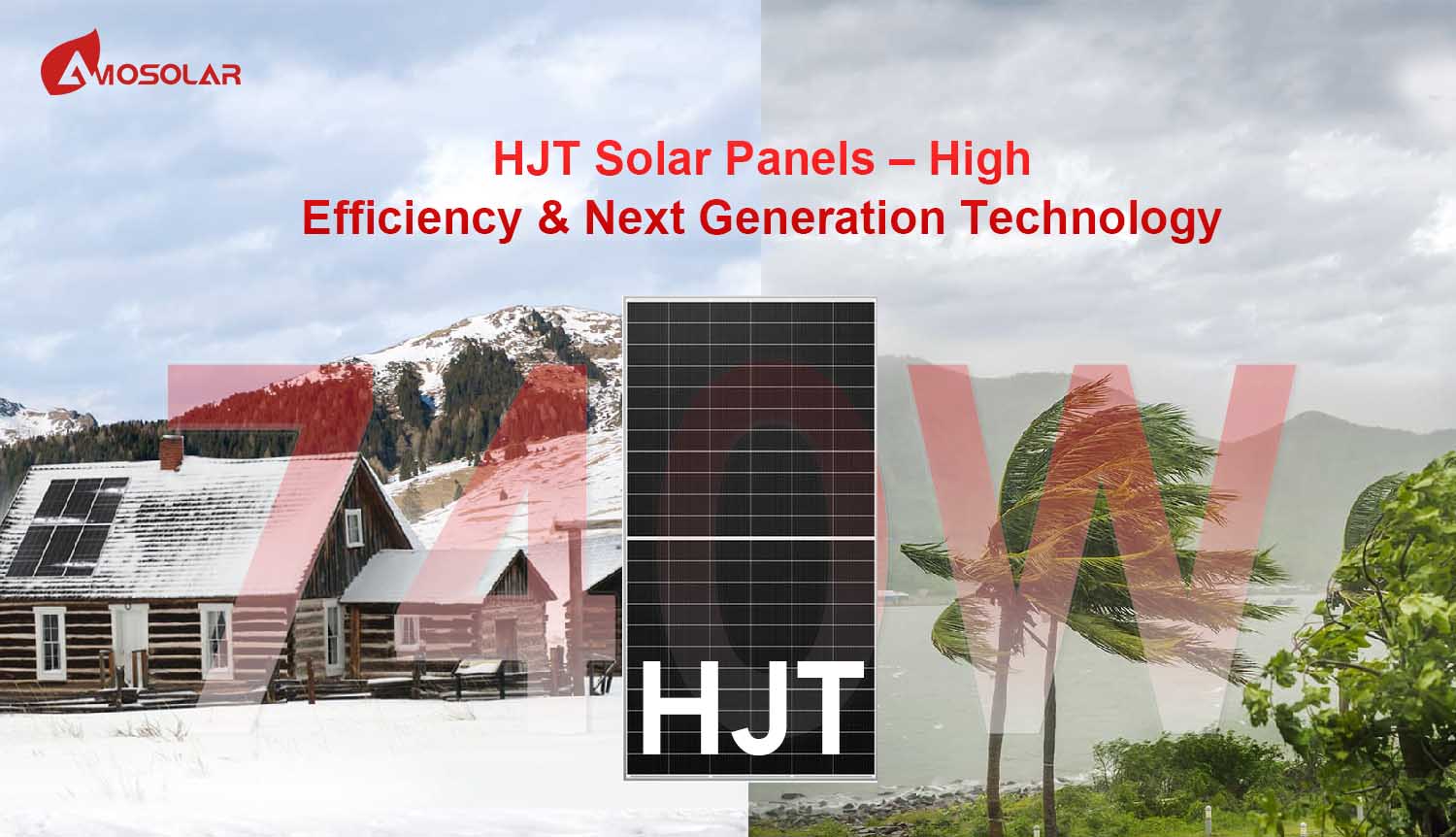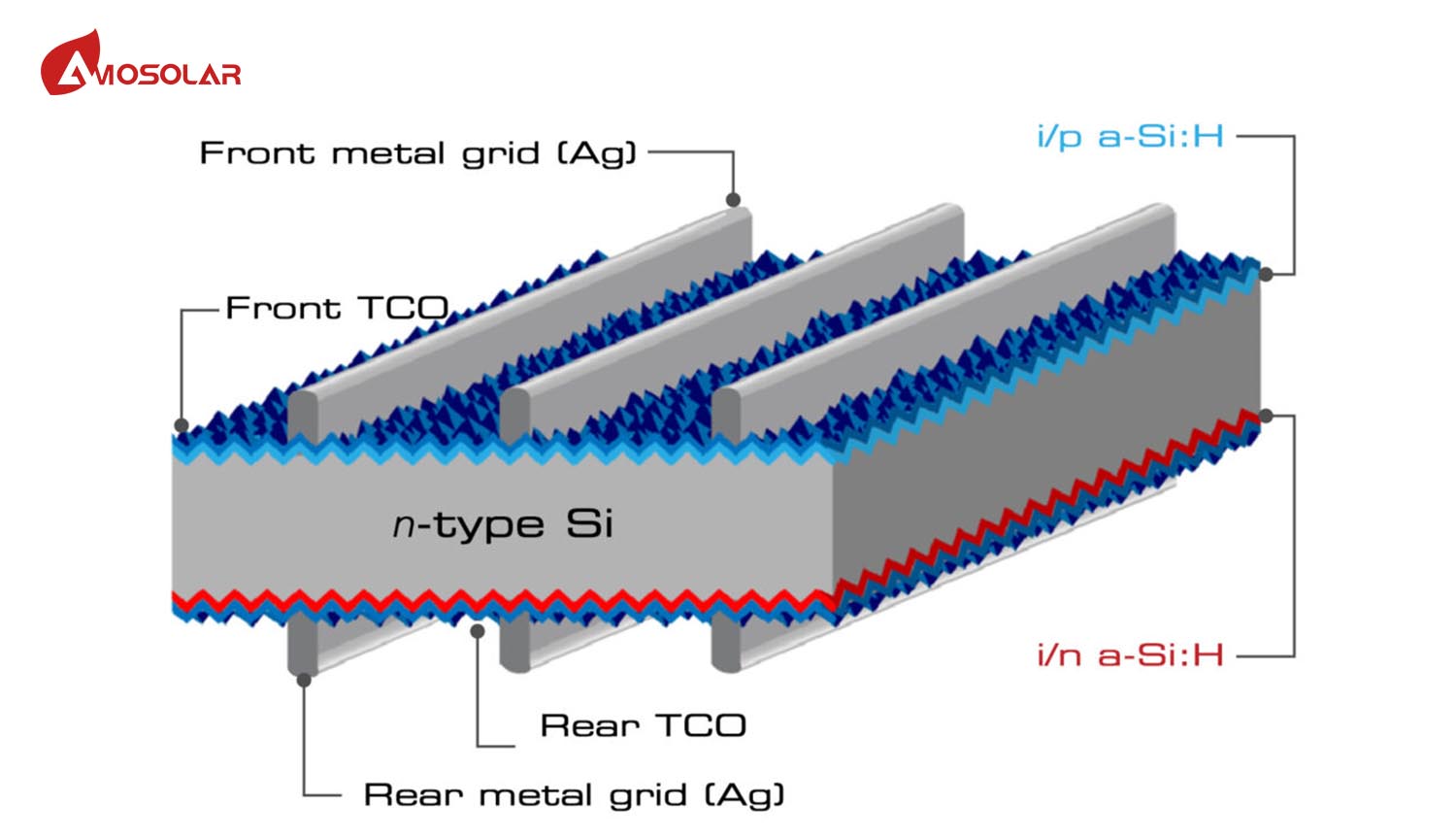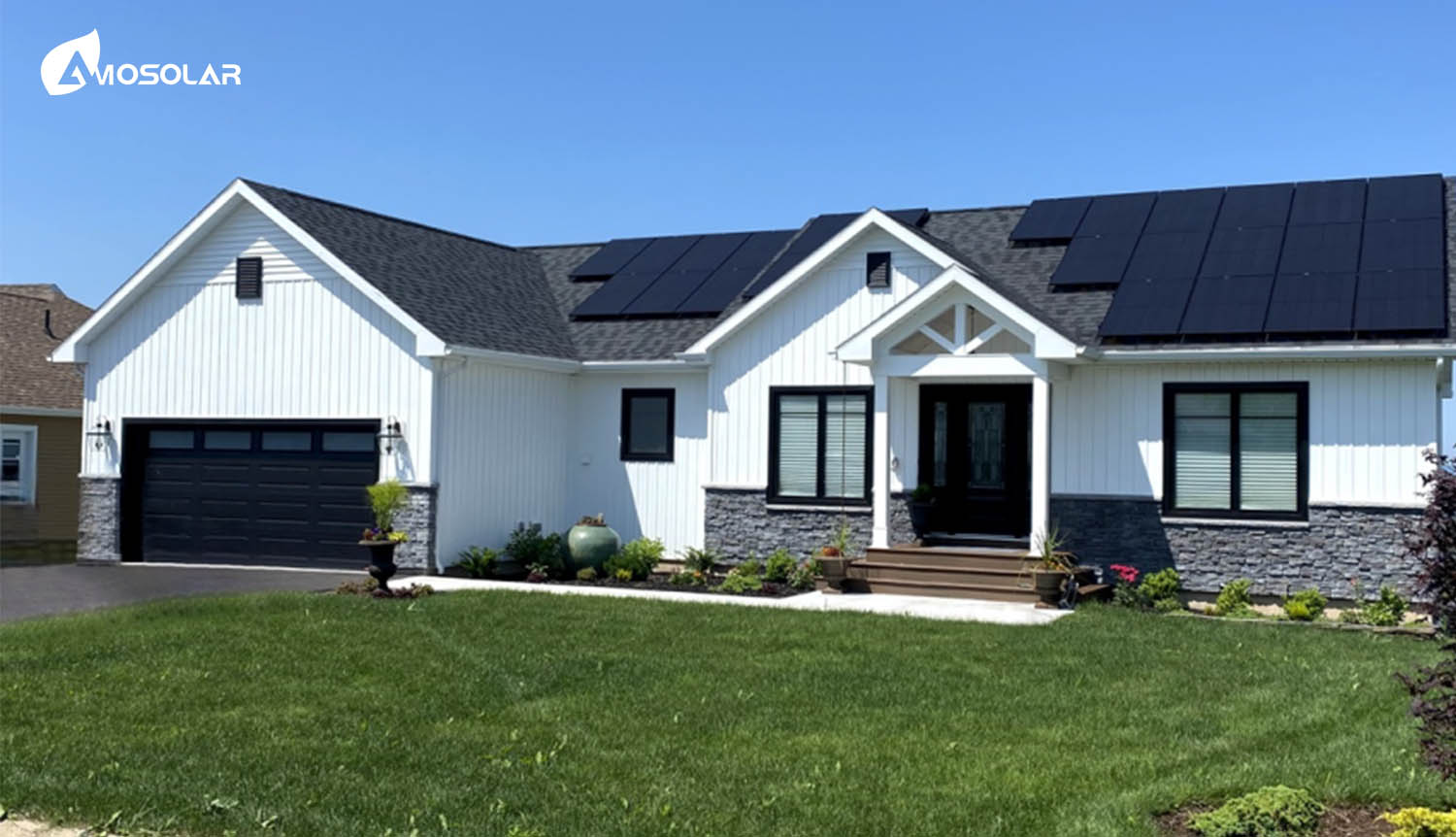
Painéis solares HJT são construídas com uma estrutura única de três camadas de materiais fotovoltaicos. A camada superior consiste em silício amorfo, que captura a luz solar antes que ela atinja a camada de silício monocristalino abaixo. A camada intermediária de silício monocristalino desempenha o papel principal na conversão de luz solar em eletricidade com alta eficiência. Por fim, a camada inferior de silício amorfo de película fina captura qualquer luz restante que passe pelas duas primeiras camadas.
Ao combinar essas tecnologias em uma única célula, Módulo fotovoltaico HJT s podem coletar significativamente mais energia solar do que os painéis que utilizam qualquer uma das tecnologias isoladamente, alcançando eficiências de conversão de 25% ou mais. Este projeto é um dos principais motivos pelos quais os painéis solares HJT são cada vez mais populares nos dias de hoje. sistemas de energia solar , incluindo telhado, montagem no solo e Recipiente BESS aplicações.

Desempenho de alta eficiência
O núcleo dos painéis solares HJT reside em seu design de célula superior. Ao adotar células solares de heterojunção de alta eficiência, esses painéis podem alcançar mais de
Eficiência do módulo de 21,5%
, superando significativamente os módulos tradicionais. O uso de wafers do tipo N garante que não haja LID (Degradação Induzida por Luz) causada por pares de BO, mantendo o desempenho de saída a longo prazo.
Tecnologia líder em células HJT de meio corte
A inovadora tecnologia de células HJT de meio corte aumenta a confiabilidade e a resistência mecânica dos módulos, ao mesmo tempo em que melhora a tolerância ao sombreamento e reduz a perda de energia. Isso resulta em um rendimento energético mais estável e consistente para diversos fins.
sistemas de energia solar.
Excelente Coeficiente de Temperatura
Uma das características marcantes dos painéis solares HJT é seu desempenho térmico superior. Com um coeficiente de temperatura de alimentação tão baixo quanto
-0,24%
, os módulos oferecem um rendimento estável mesmo em ambientes de alta temperatura, tornando-os ideais para sistemas solares comerciais e fazendas solares de grande escala.
Geração de energia bifacial
Graças ao seu fator de dupla face de 85%, os módulos fotovoltaicos HJT podem capturar a luz solar tanto da parte frontal quanto da traseira. Essa capacidade bifacial aumenta significativamente a produção total de energia, especialmente em aplicações de sistemas solares montados no solo e em telhados, onde a luz refletida contribui para uma maior produção.
Excelente resistência PID
Os painéis solares HJT oferecem excelente resistência à Degradação Potencial Induzida (PID), garantindo estabilidade elétrica a longo prazo e reduzindo o risco de perda de energia ao longo do tempo. Isso os torna a escolha ideal para sistemas solares off-grid.
sistemas solares híbridos
, e projetos conectados à rede que exigem alta confiabilidade.

Seja implantada em sistemas solares de telhado, parques solares montados no solo ou soluções em contêineres BESS, a tecnologia HJT garante desempenho e eficiência incomparáveis. A adaptabilidade da tecnologia permite uma ampla gama de projetos de sistemas de energia solar, atendendo às necessidades energéticas dos setores residencial, comercial e industrial.

Em resumo, os painéis solares HJT oferecem vantagens excepcionais em termos de eficiência, estabilidade e durabilidade. Com alta eficiência modular, baixo coeficiente de temperatura, excelente resistência PID e ganho de potência bifacial, estão entre as soluções mais avançadas disponíveis para qualquer sistema moderno de energia solar. Escolher a HJT significa garantir a produção de energia a longo prazo e reduzir os custos de eletricidade nas próximas décadas.
 Endereço: No.210 QianShan Road, Shushan Dsitrict, Hefei, Anhui, China
Endereço: No.210 QianShan Road, Shushan Dsitrict, Hefei, Anhui, China Telefone: +86 13956933621
Telefone: +86 13956933621 E-mail: info@amo-solar.com
E-mail: info@amo-solar.com Contato: Sabrina Han
Contato: Sabrina Han


